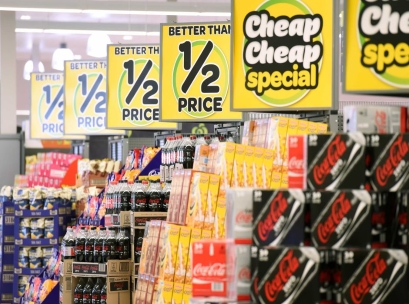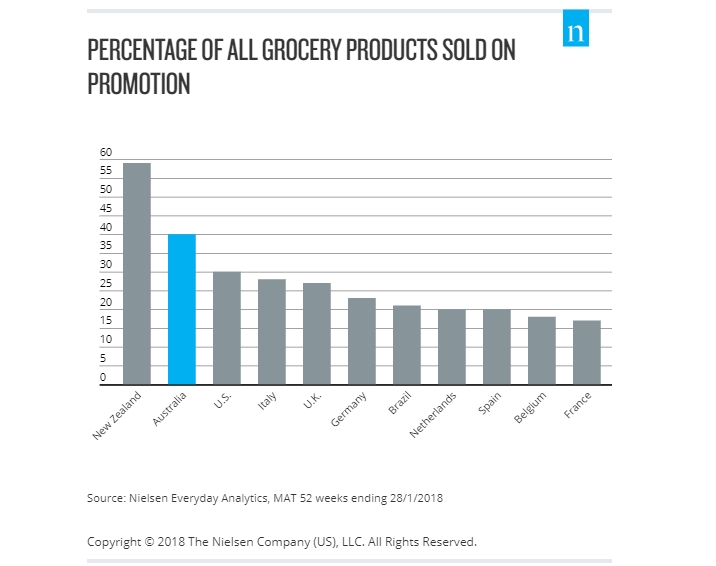 Australian manufacturers and retailers are investing an exceptional amount of time and money executing promotions on a regular basis – with the hope that both parties will benefit from a maximum return on their investment. The reality is, however, that this outcome is rarely ever achieved.
Australian manufacturers and retailers are investing an exceptional amount of time and money executing promotions on a regular basis – with the hope that both parties will benefit from a maximum return on their investment. The reality is, however, that this outcome is rarely ever achieved.
In Australia, A$51 billion is spent on promoted sales; however, 48 per cent of this amount would have happened anyway. In other words, there are grocery items that would sell the same amount whether they were promoted or not. As a result, there is an A$11.3 billion opportunity (considering the discounted amount) for Australian manufacturers and retailers to drive efficiency in their promotions.
IT’S ESTIMATED THAT THE RETAIL SALES VALUE OF THE DISCOUNTS APPLIED FOR PROMOTIONS THAT GENERATE LITTLE TO NO INCREMENTAL SALES IS OVER A$11.3 BILLION.
In the past eight years, the percentage of products sold on promotion has increased from 30 per cent to 40 per cent, making Australia one of the most highly promoted countries in the world. This has given rise to Australian shoppers who are highly price aware. Some of these shoppers change their behaviours by picking where to shop, switching between promoted brands in-store and pantry stocking on promoted products.
PICKING THE RIGHT STRATEGY:
To further understand how players in the Australian FMCG industry can secure their share of the A$11.3 billion promotional saving opportunity, Nielsen analysed the amount manufacturers and retailers spend on discounts across 7,000 items and across 22 categories. By looking at how sensitive shoppers are to shelf-price changes and promoted-price changes, products were split out into four distinct pricing strategies:
1. Fewer but deeper discount strategy (Hi-Lo): These products are more sensitive to promoted-price than they are to shelf-price. At a category level, chocolate fits into this strategy due to the high concentration of items compared to the market.
2. Highly sensitive to price: Products in this quadrant are sensitive to both shelf and promoted-prices and tend to be categories like pet food, pasta and deodorants.
3. EDLP or Everyday Low Price: With the high levels of price promotions training consumers to look for promos in-store, it’s no surprise that few categories have higher concentration in this quadrant. Examples include laundry and ice cream products.
4. Limit the number of promotions (Hi-No): This strategy works best for products with low sensitivity to both regular and promoted price changes e.g. canned vegetables, bread, and coffee. This is the quadrant where a significant amount of discounts are often ‘given away’.
In fact, 59 per cent of the most highly-promoted items do not react to discounts because they fit to either EDLP or to Hi-No strategies. Limiting the promotions or changing the strategy could be more effective for these products.
59 PER CENT OF THE MOST PROMOTED ITEMS HAVE MUCH LOWER REACTION TO DISCOUNTS

In the competitive world of retail pricing and promotions, relentlessly promoting products with no regard for sales uplift is a difficult strategy to sustain. What’s clear is that demand-driven price and promotional strategies are more likely to be sustainable in the long term.
Raone Zeviani is the Senior Manager for Sales and Marketing Effectiveness at Nielsen Australia.






